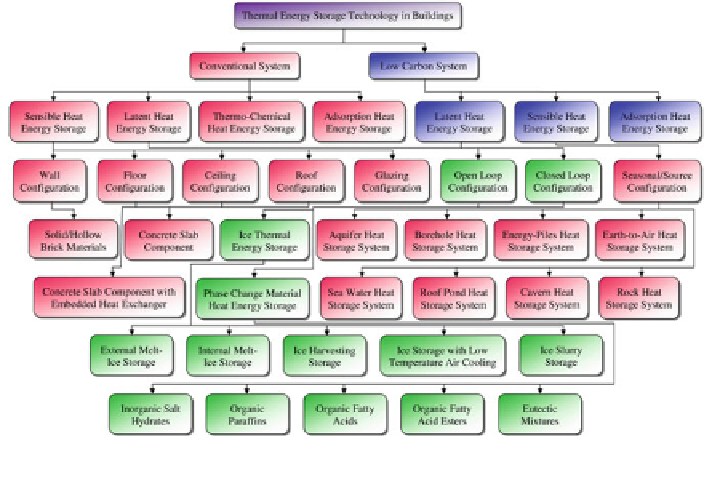Civil Engineering Reference
In-Depth Information
Fig. 2
Broad classification of thermal energy storage technologies incorporated in buildings
In a passive system, the thermal energy is stored by virtue of temperature
gradient between the fabric material and indoor space through the density differ-
ence in indoor air being aided by the natural convection process. On the other
hand, active systems utilize mechanically assisted fan or blower units for
distributing air over the building fabric materials in order to store or release the
thermal energy. Some active systems are equipped with heat exchange coil
elements being embedded inside the building fabric structures, wherein cold or hot
water supplied through the coil elements effectively transfers the required heat
energy to fabric materials. In short, the rate of heat transfer primarily depends
upon the mass of the fabric material, specific heat capacity of fabric and heat
transfer fluid (air or water), temperature gradient between the fabric structure and
indoor air, volume flow rate of cool or warm water in heat exchange elements,
thermal conductivity of fabric material and heat transfer fluid, thickness of fabrics,
infiltration (moisture effects) through the building structure and so on.
3.1.1 Storage with Ceiling Slab Component
The most attractive and easy way of storing thermal energy in buildings is
achieved using this technology. This storage system finds itself in place between
conventional natural ventilation and mechanical ventilation systems. Typically, in
the cooling mode, during night-time (or part-load conditions), by passing the cold
air from the occupied zones over the surface of the ceiling slab, the desired cool
thermal energy is trapped off and stored in the slab component.

